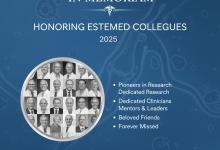It Begins with the Introduction Save

The introduction of a guest or speaker should be simple, functional and respectful. In the least, it should go something like, “I have the honor of introducing our speaker, Dr. John Brown, who comes to us from Brown University, where he is the Chief of Internal Medicine. Today he’s going to lecture on “the right way to lecture”.
However, no one does this. Instead most try to do more, usually with knowledge gaps, and end up delivering incomplete, awkward or bad introductions. No one delivers less verbiage, unless of course the person being introduced is a regular speaker or part of your organization.
Introductions tend to either be awkward or great.
Most introductions are read verbatim from the speaker-provided biography sent prior to the program. Speakers are usually good speakers, but not necessarily good “bio” authors. Hence reading a bio that itemizes the speaker’s job(s), medical pedigree and professional affiliations usually comes off as impersonal, if not boring. I know you can do better. You should do better.
The reason I’m writing about the obligatory introduction task is because yesterday I heard that Dr. Donald Seldin, an Emeritus Professor of Internal Medicine at the University of Texas Southwestern Medical School, passed away at the age of 97. His picture (at the UT Southwestern Grand Rounds podium) is attached to this article.
Dr. Seldin was a mammoth legend of a teacher and leader in the history of internal medicine. He was chairman of internal medicine at UT Southwestern for over 35 years. He was among the few who started the school in the 1950s and brought many talents to Texas (including Drs. Morris Ziff and Chester Fink) and built one of the better internal medicine departments nationwide. He was a man of high ideals, high intelligence and high expectations from those he trained and worked with. His loss is a large one for medicine and his many students. But, what I remember most about Dr. Seldin was his introductions.
His introductions were elegant, inspirational and high class. The facts were delivered, usually in the context of history or a vignette that became the back story to the speakers impressive accomplishments generously shared with the audience. He created great expectations in the audience, while also warmly and personally welcoming the speaker to his program, his medical school. Much of what was said would not be found in a speaker bio. He either knew the speaker or did his research, and planned or wrote out his special introductions. Somehow he made them all special, or at least feels special. All this was done without notes or a teleprompter. Speakers were usually elated or humbled, if not shaken.
Back in the 1990s I gave a dinner lecture in Kansas City. It was a small gathering of local rheumatologist and I was talking about new therapies in rheumatoid arthritis. I was introduced by someone I had never met before, the chairman of rheumatology at University of Kansas School of Medicine, Dr. Stechschulte.
His introduction floored me. He extemporaneously told of my achievements, quoted a paper and welcomed me to his town and this program. This very classy gentleman had gone out of his way to make me feel that I was a respected colleague, but in doing so I then learned I was going to have to work hard to live up to the level he built me up to. It was a wonderful experience to have such a well done introduction by someone I revered but had previously not met.
By contrast I lectured soon after in another Midwest city and listened as the program chairman fumbled his notes, misspoke my name and university, all with a convincing degree of awkwardness and feigned interest.
This made me smile, because I knew what a great introduction was and I knew I just heard the polar opposite. Now my goal was to give a lecture that would be memorable to both the host and audience.
If you have the thankless responsibility of introducing someone at a forum or program, or even at a dinner table, you should consider the task and try to match the excellence of that you have seen elsewhere. After all, this is your guest, whom you invited, to your home/program/school.
My advice is to spend a few minutes to know your speaker. Your introductions may not make a medical master like Dr. Donald Seldin, but it may make you and your program memorable and revered. To be the master of the grand introduction would speak well of you and even more so of your guest. The task is more challenging (but more important) when the speaker has a reputation that most are familiar with.
You will forever be known as the most gracious, generous and intelligent host.
I would suggest the following
- Study the bio; pick the elements that stand out to you (your charm, humor and gift of gab cant make up for poor preparation).
- Call someone who knows the speaker to get their perspective on what he/she is known for; what makes this person stand out or even an anecdote that typifies what makes them special or unique.
- Share something about the speaker; only if pleasing and within the context of the address or program.
- In advance, ask the speaker what would they like you to address in their info; what’s important to them
- Address why this speaker, this subject, to this audience, at this time
- Reduce your notes to a 3 x 5 card, practice twice and deliver with a smile and interest
- A good introduction should be 1-2 minutes
Great speakers make for great programs. Why not kick it off with a great introduction.
Thanks to Dr. Seldin and Dr. Stechschulte for having taught by example.








If you are a health practitioner, you may Login/Register to comment.
Due to the nature of these comment forums, only health practitioners are allowed to comment at this time.